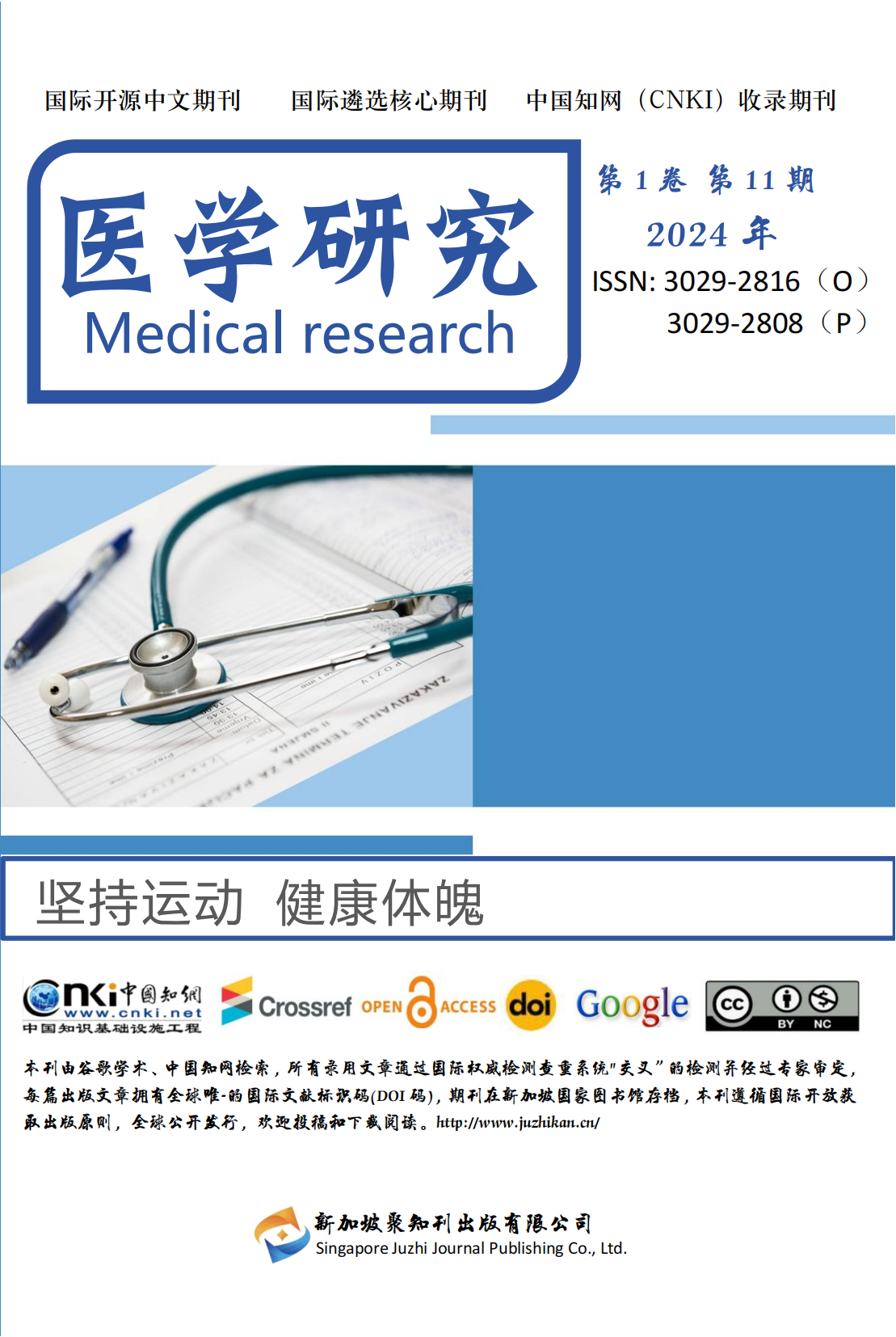 65 84368249
65 84368249 info@juzhikan.asia
info@juzhikan.asia 65 84368249
65 84368249 info@juzhikan.asia
info@juzhikan.asia
苏州市吴江区疾病预防控制中心,江苏苏州,215200;
摘要:目的 评价停课和洗手两种干预措施对学生洗手知识掌握及行为改变的影响和对流行性感冒疫情传播的影响。方法 对有流感病例的班级随机分为三组:停课组全员停课4天,洗手组进行洗手知识宣教,每次进入教室均用酒精类洗手液洗手,非干预组按照常规方式处置。干预两周后,分析干预前后学生手部卫生知识认知情况及行为改变,比较各组流感发病率。结果 干预前后停课组和洗手组两组的洗手指征认知均有所提高(P值分别为0.011和<0.001);停课组和洗手组在干预前后总卫生习惯和咳嗽习惯均有显著性提高(P值均<0.001),非干预组干预前后无显著性变化,干预后洗手组的总卫生习惯和咳嗽习惯均优于非干预组(P<0.001)。停课组、洗手组和非干预组三组发病率分别为2.58%、4.41%、6.26%,停课组发病率低于洗手组和非干预组(F=3.865, P =0.044),洗手组发病率与非干预组无显著区别(P =0.546)。 结论 停课可降低学校流行性感冒发病率;洗手干预措施有效提高了学生卫生习惯,但并未发现洗手对学校流行性感冒的发病率有明显影响,学校应加强手卫生健康知识宣传教育工作,提升儿童健康水平。
关键词:流行性感冒;手卫生;停课;小学;干预
参考文献
[1]于秋燕,高尚,单朝霞,等.济南市学校流感监测与学生疾病负担调查[J].中国学校卫生,2021,42(12):1863-1866.
[2] Biswas R, Kirti R,Ojha VS, et al. Efficacy of Interventions Based on WHO Multimodal Hand Hygiene Improvement Strategy in a Tertiary Care Hospital in Eastern India:A Quasi-Experimental Study[J].Am J Med Qual,2023,38(5):255-263.
[3] Munn Z, Tufanaru C, Lockwood C, et al. Rinse-free hand wash for reducing absenteeism among preschool and school children[J]. Cochrane Database Syst Rev, 2020,4(4):CD012566-CD012689.
[4] Galli A,Ma'ani Abuzahra Y,Bänziger C,et al.Assessing the Effectiveness of a Multicomponent Intervention on Hand Hygiene and Well-Being in Primary Health Care Centers and Schools Lacking Functional Water Supply in Protracted Conflict Settings: Protocol for a Cluster Randomized Controlled Trial[J]. JMIR Res Protoc,2024,13(1):e52959-e52973.
[5] Or PP,Ching PT,Chung JW.Can Flu-Like Absenteeism in Kindergartens Be Reduced Through Hand Hygiene Training for Both Parents and Their Kindergarteners?[J].J Prim Care Community Health,2020,11(1):2150132719901209-2150132719901214.
[6] Cauchemez S,Valleron AJ,Boëlle PY,et al. Estimating the impact of school closure on influenza transmission from Sentinel data[J].Nature,2008,452(7188):750-754.
[7]申锦玉,牛建军,陈忠龙,等.停课和改善卫生行为对甲型H1N1流感疫情传播影响分析[J].中国学校卫生,2011,32(01):106-108.
[8]国家卫生健康委疾控局.流感样病例暴发疫情处置指南[Z].2018-11-14.
[9]杭惠,陈立凌,刘成.2012-2022年苏州市15岁以下儿童法定传染病流行特征分析[J].预防医学情报杂志,2024,40(03):233-238.
[10] Cowling BJ,Ali ST,Ng TWY,et al.Impact assessment of non-pharmaceutical interventions against coronavirus disease 2019 and influenza in Hong Kong: an observational study[J].Lancet Public Health,2020,5(5):e279-e288.
[11] Bin Nafisah S,Alamery AH,Al Nafesa A,et al.School closure during novel influenza: a systematic review[J].J Infect Public Health, 2018,11(5):657-661.
[12] Gillebaart M,Ybema JF,de Ridder DTD.Make it a habit:how habit strength, goal importance and self-control predict hand washing behaviour over time during the COVID-19 pandemic[J]. Psychol Health,2022,37(12):1528-1546.
[13] Liu M,Ou J,Zhang L,et al.Protective Effect of Hand-Washing and Good Hygienic Habits Against Seasonal Influenza: A Case-Control Study[J].Medicine (Baltimore),2016,95(11):e3046-e3052.
[14] Talaat M, Afifi S, Dueger E, et al. Effects of hand hygiene campaigns on incidence of laboratory-confirmed influenza and absenteeism in schoolchildren,Cairo,Egypt[J].Emerg Infect Dis,2011,17(4):619-625.
[15] Stebbins S, Cummings DA, Stark JH, et al. Reduction in the incidence of influenza A but not influenza B associated with use of hand sanitizer and cough hygiene in schools: a randomized controlled trial[J]. Pediatr Infect Dis J,2011,30(11):921-926.
[16] Veys K, Dockx K, Van Remoortel H, et al. The effect of hand hygiene promotion programs during epidemics and pandemics of respiratory droplet-transmissible infections on health outcomes: a rapid systematic review[J]. BMC Public Health, 2021,21(1):1745-1755.
[17] Doshi S, Silk BJ, Dutt D, et al. Household-level risk factors for influenza among young children in Dhaka, Bangladesh: a case-control study[J]. Trop Med Int Health, 2015,20(6):719-729.
[18] Moncion K, Young K, Tunis M, et al. Effectiveness of hand hygiene practices in preventing influenza virus infection in the community setting: A systematic review[J]. Can Commun Dis Rep, 2019,45(1):12-23.
[19] Aggarwal N, Dwarakanathan V, Gautam N, et al. Facemasks for prevention of viral respiratory infections in community settings: A systematic review and meta-analysis[J]. Indian J Public Health, 2020,64(2):S192-S200.
[20] Ross I, Bick S, Ayieko P, et al. Effectiveness of handwashing with soap for preventing acute respiratory infections in low-income and middle-income countries: a systematic review and meta-analysis[J]. Lancet, 2023,401(10389):1681-1690.
[21] Mo Y, Pham TM, Lim C, et al. The effect of hand hygiene frequency on reducing acute respiratory infections in the community: a meta-analysis[J]. Epidemiol Infect,2022,150(79):e79-e86.
[22] Jefferson T, Dooley L, Ferroni E, et al. Physical interventions to interrupt or reduce the spread of respiratory viruses[J]. Cochrane Database Syst Rev,2023,1(1):CD006207-CD006533.
[23] Ram PK, DiVita MA, Khatun-e-Jannat K, et al. Impact of Intensive Handwashing Promotion on Secondary Household Influenza-Like Illness in Rural Bangladesh: Findings from a Randomized Controlled Trial[J]. PLoS One, 2015,10(6): e0125200-e0125217.
[24] Simmerman JM, Suntarattiwong P, Levy J, et al. Findings from a household randomized controlled trial of hand washing and face masks to reduce influenza transmission in Bangkok, Thailand[J]. Influenza Other Respir Viruses, 2011,5(4):256-267.
[25] Cowling BJ, Chan KH, Fang VJ, et al. Facemasks and hand hygiene to prevent influenza transmission in households: a cluster randomized trial[J].Ann Intern Med, 2009,151(7):437-446.